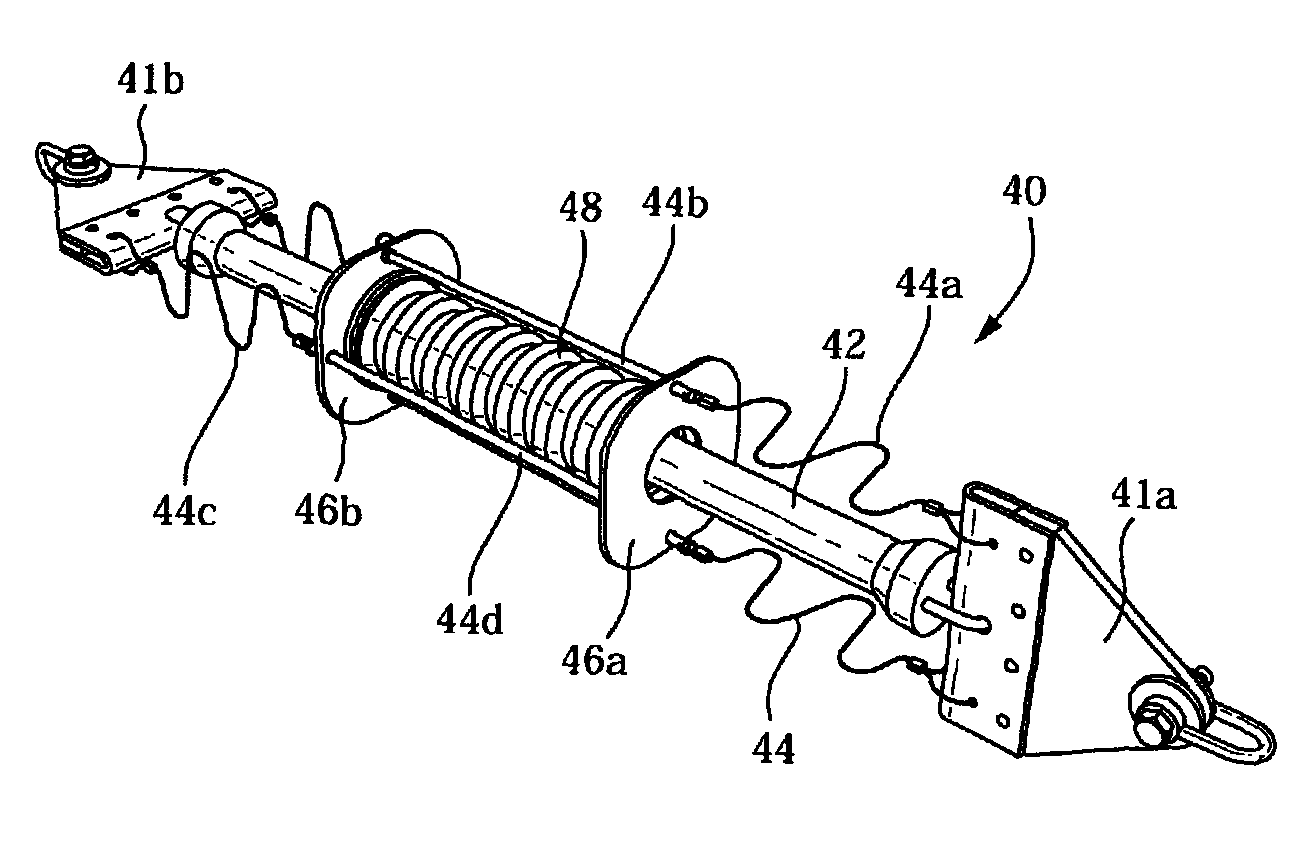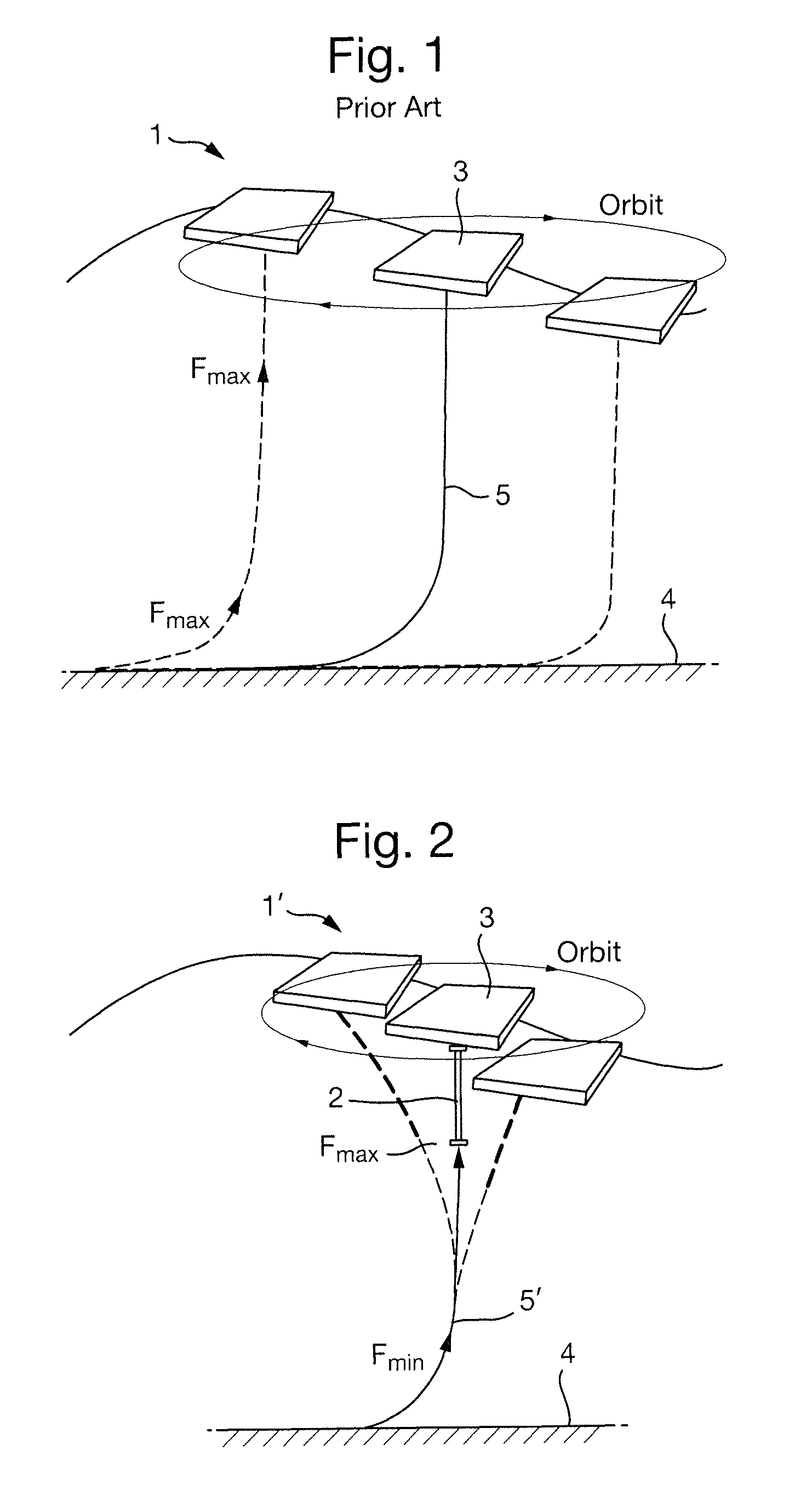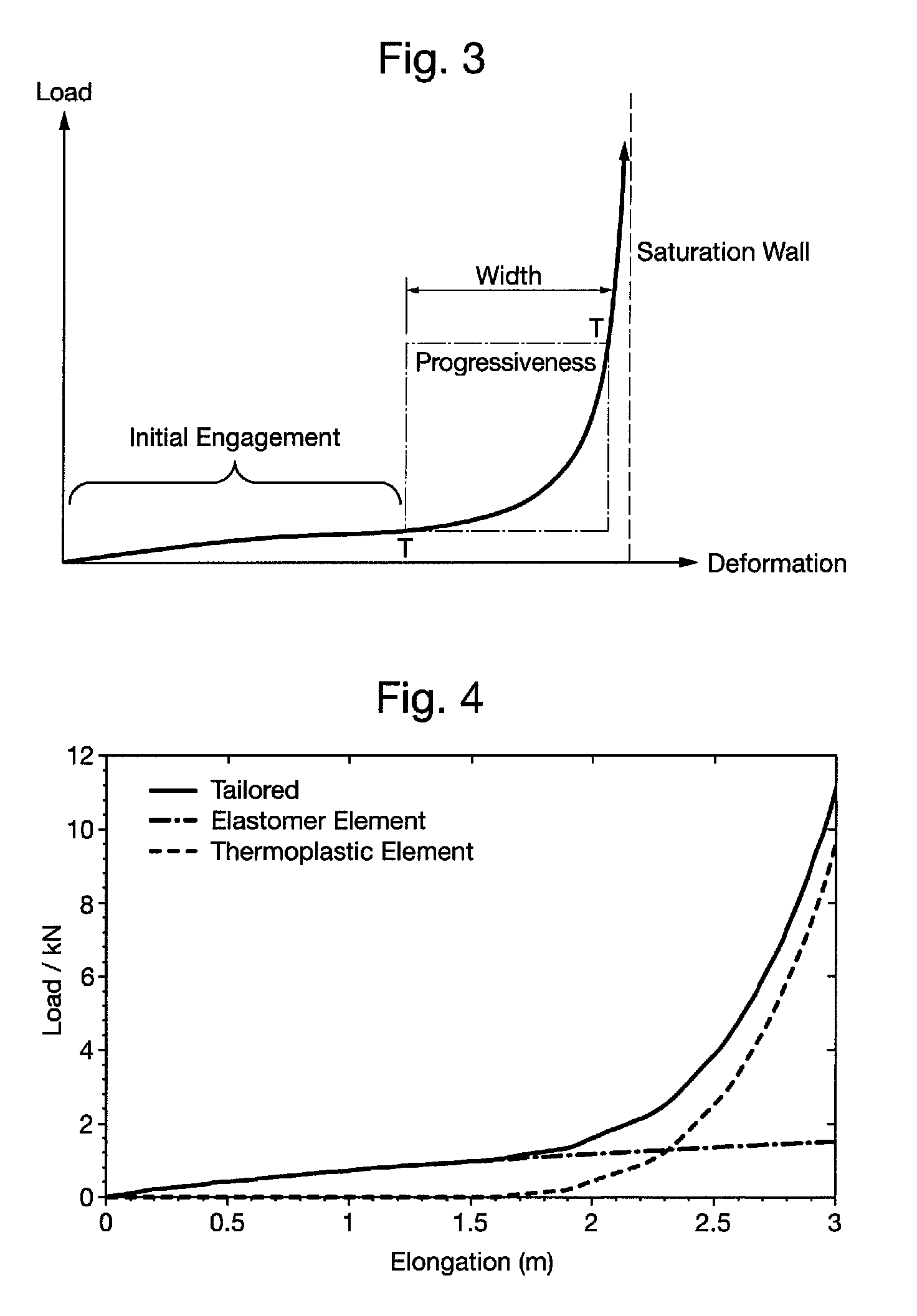Mooring component having a smooth stress-strain response to high loads
a stress-strain response and mooring technology, applied in the direction of mooring equipment, waterborne vessels, transportation and packaging, etc., can solve the problems of small elongation of the order of 10-25%, difficult handling and maintenance, and limited use of mooring components, etc., to achieve low scope, small footprint, and withstand relatively large changes in wave height and/or tidal motion. , the effect of reducing the risk of damag
- Summary
- Abstract
- Description
- Claims
- Application Information
AI Technical Summary
Benefits of technology
Problems solved by technology
Method used
Image
Examples
first embodiment
[0132]There is shown in FIG. 6 a mooring component 10 according to the present invention comprising three elastomeric tensile elements 12a-12c arranged in parallel. The middle element 12a has a length L that matches the tensile length of the component, which may be 16 m. Another element 12b has a length L′12c has a length L′12b, 12c are connected to the ends of the component by steel cables 14. Although the elastomeric elements 12a-12c are shown as being laid side-by-side, they could instead be wrapped around each other in any suitable way.
[0133]FIGS. 7a and 7b show how the mooring component 10 of the first embodiment stretches in response to tensile stress. From FIG. 7a it can be seen that the middle element 12a corresponding to the tensile length L stretches first, while the cables 14 start to extend but the two shorter elements 12b, 12c are not initially put under tension. As the component 10 is stretched further, the cables 14 become taut and the shorter elements 12b, 12c also s...
second embodiment
[0134]FIG. 8 shows a mooring component 20 according to the present invention comprising six elastomeric tensile elements 22a-22f arranged in parallel. Both FIGS. 7 and 8 show mooring components that could have a tensile length L of 16 m. In the embodiment seen in FIG. 8 each of the six elements 22a-22f has a different length and diameter. Five of the elastomeric elements 22b-22f have a length L′20 by steel cables 24. It will be appreciated that the lengths and diameters of the elements 22a-22f can depend on the tensile strength of the elastomeric material used. Using material with a tensile strength ˜6 MPa, the dimensions of the six different elements may be, for example, as listed in Table 1.
[0135]
TABLE 1Mooring component element dimensionsElementLength / mDiameter / m22a160.522b15.70.322c14.20.2822d13.40.1822e12.60.2222f11.10.21
[0136]If the mooring component shown in FIG. 8 were to be made up of tensile elements each having a length≧the tensile length L of the component (e.g. 16 m), t...
third embodiment
[0137]FIG. 9 shows a mooring component 30 according to the present invention. This component is similar to FIG. 8 in that there are six elastomeric tensile elements 32a-32f arranged in parallel, but in addition the component 30 also includes a central guide member 36 to separate the elements 32a-32f laterally. Such a guide member 36 may help to ensure that there is no contact between the elements 32a-32f as the component 30 moves and stretches, or at least that the elements 32a-32f do not become entangled. In this example the guide member 36 comprises a row of six separated passages for the elastomeric elements 32a-32f. The guide member 36 is designed so as not to inhibit the elements from 32a-32f from stretching and so preferably there is a low coefficient of friction between the elastomeric material of the tensile elements 32a-32f and the material of the guide member 36. Depending on the size of the component 30, the guide member 36 may possibly be used to add shape or rigidity.
[0...
PUM
| Property | Measurement | Unit |
|---|---|---|
| Length | aaaaa | aaaaa |
| Thickness | aaaaa | aaaaa |
| Force | aaaaa | aaaaa |
Abstract
Description
Claims
Application Information
 Login to View More
Login to View More - R&D
- Intellectual Property
- Life Sciences
- Materials
- Tech Scout
- Unparalleled Data Quality
- Higher Quality Content
- 60% Fewer Hallucinations
Browse by: Latest US Patents, China's latest patents, Technical Efficacy Thesaurus, Application Domain, Technology Topic, Popular Technical Reports.
© 2025 PatSnap. All rights reserved.Legal|Privacy policy|Modern Slavery Act Transparency Statement|Sitemap|About US| Contact US: help@patsnap.com



